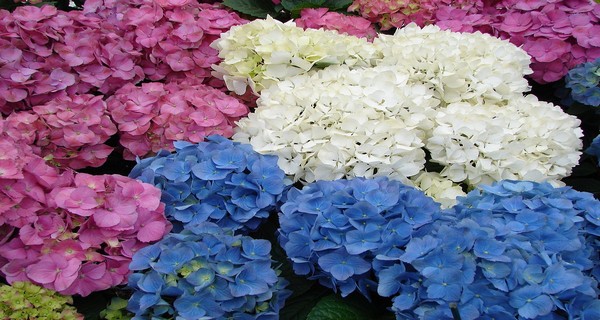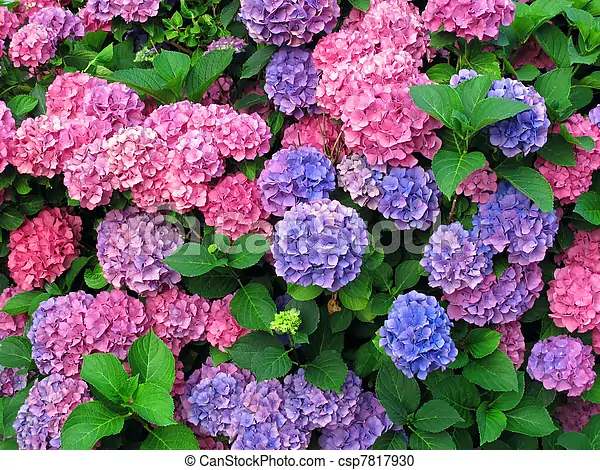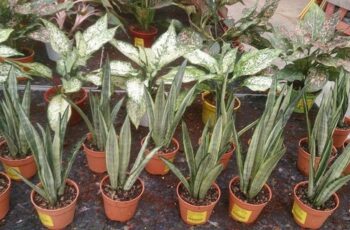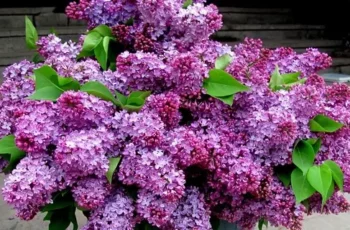Ad Blocker Detected
Our website is made possible by displaying online advertisements to our visitors. Please consider supporting us by disabling your ad blocker.
If you’re looking for a garden flower with show appeal, hydrangea flowers are truly stunning. Large globes of flowers cover this shrub in summer and spring. Although their appearance may seem high maintenance, with the right conditions and care, hydrangeas are actually fairly easy to grow. So grab your garden gloves, because our growing hydrangeas guide will have you ready to plant in no time.
What Are Hydrangeas?

Blooming in spring and summer, the hydrangea is considered a shrub. But despite their ability to be rather large showstoppers in your yard, how to grow hydrangeas isn’t a question even the novice gardener will need to ask – these beauties all but grow themselves. Reaching up to 15 feet in height, the hydrangea grows quickly and often fills in space in just one summer. You’ll find hydrangeas growing in hardiness Zones 3 to 7 as perennials. With flowers starting in spring and often last throughout summer into early fall, hydrangea flowers can be the foundation plant of your landscape.
Planting Hydrangeas
As with most things in your garden, learning the basics of how to plant hydrangeas can save you time and money. By choosing the proper location, getting the soil just right, and planting correctly, you’ll increase your chances of enjoying large, colorful hydrangea blooms for years to come.
-
Best time to plant hydrangeas
Fall is the best season to plant hydrangeas, followed by early spring. The idea is to give the shrub plenty of time to establish a healthy root system before blooming. The best time of day to plant is early morning or late afternoon. The cooler parts of the day offer protection against heat stress. Keep new plants well-watered until established.
-
Where to plant hydrangeas
Knowing where to plant hydrangea shrubs is an important first step. Many people plant hydrangeas in beds next to their homes or fences. This is because hydrangeas love the warm morning sun, but they dislike the heat of the afternoon. The best place to plant hydrangeas is in a sheltered location with sunny mornings and shady afternoons. You often find this on the north or south side of your home. Avoid planting directly underneath trees, which can lead to competition for water and nutrients. High winds can rip and damage leaves and destroy the flowers.
- The best soil for hydrangeas
Hydrangeas grow well in soil containing an abundance of organic material. Good drainage is vital. While hydrangeas like moist soil, they cannot tolerate being waterlogged. Soggy, poorly draining soils can cause root rot. In just a few weeks, your hydrangeas can quickly die. If you have heavy soil, consider mixing in plenty of compost prior to planting to improve soil quality.
-
How to plant hydrangeas
To plant hydrangeas, simply dig the planting holes 2 feet wider than the root ball. Keep the depth of the hole consistent with the size of the root ball so your plant sits level with or just higher than the surrounding soil. By creating a slight mound, you help increase water drainage away from the base of the plant.
-
How to propagate hydrangeas
One hydrangea can turn into many through simple propagation techniques. Bigleaf and panicle hydrangeas are best propagated through layering in early to mid-summer. All you have to do is:
- Dig a small trench near your hydrangea plant.
- Bend a branch down to the trench so it touches the soil in the middle of the branch (six to 12 inches of the branch should extend past the trench).
- Make scratches in the bark where the branch touches the trench soil.
- Fill in the trench and place a paver, brick, or stone on top.
- With time, the branch will form its own root system and may be transplanted to a new location.
Disclosure
I’m a participant in the amazon associate program which means I’ll earn a small commission (at no extra cost to you) when you buy through some of the links on this website, in which case I thank you.
Anker Portable Charger, 313 Power Bank (PowerCore Slim 10K) 10000mAh Battery Pack with High-Speed PowerIQ Charging Technology and USB-C (Input Only) for iPhone, Samsung Galaxy, and More
Smooth and oakleaf hydrangeas put out new shoots through underground stems. Just dig up the young plant and separate it away from the main plant. It can then be transplanted to a new location.
Disclosure
I’m a participant in the amazon associate program which means I’ll earn a small commission (at no extra cost to you) when you buy through some of the links on this website, in which case I thank you.
Hydrangea Care Tips

Although the hydrangea’s leaves and flowers appear delicate, they actually don’t require a lot of tender care. These tips provide all you need to know about how to care for hydrangeas.
Water
at a rate of 1 inch per week throughout the growing season. Deeply water 3 times a week to encourage root growth. Bigleaf and smooth hydrangeas require more water, but all varieties benefit from consistent moisture. Use a soaker hose to water deeply and keep moisture off the flowers and leaves. Watering in the morning will help prevent hydrangeas from wilting during hot days.
Add mulch
underneath your hydrangeas to help keep the soil moist and cool. An organic mulch breaks down over time, adding nutrients and improving soil texture.
Apply fertilizer
based on your specific hydrangeas. Each variety has different needs and will benefit from different application timing. The best way to determine your fertility needs is by using a soil test.
-
- Bigleaf hydrangeas need several light fertilizer applications in March, May, and June.
- Oakleaf and panicle hydrangeas do best with two applications in April and June.
- Smooth hydrangea plants only need fertilization once, in late winter.
Protect against pests and disease
by choosing cultivars with resistant traits. Leaf spots, bight, wilt, and powdery mildew can all appear on hydrangeas. Pests are not common on hydrangeas but can appear when plants become stressed. Possible pests include aphids, leaf tiers, and red spider mites. Properly caring for hydrangeas is your best defense.

